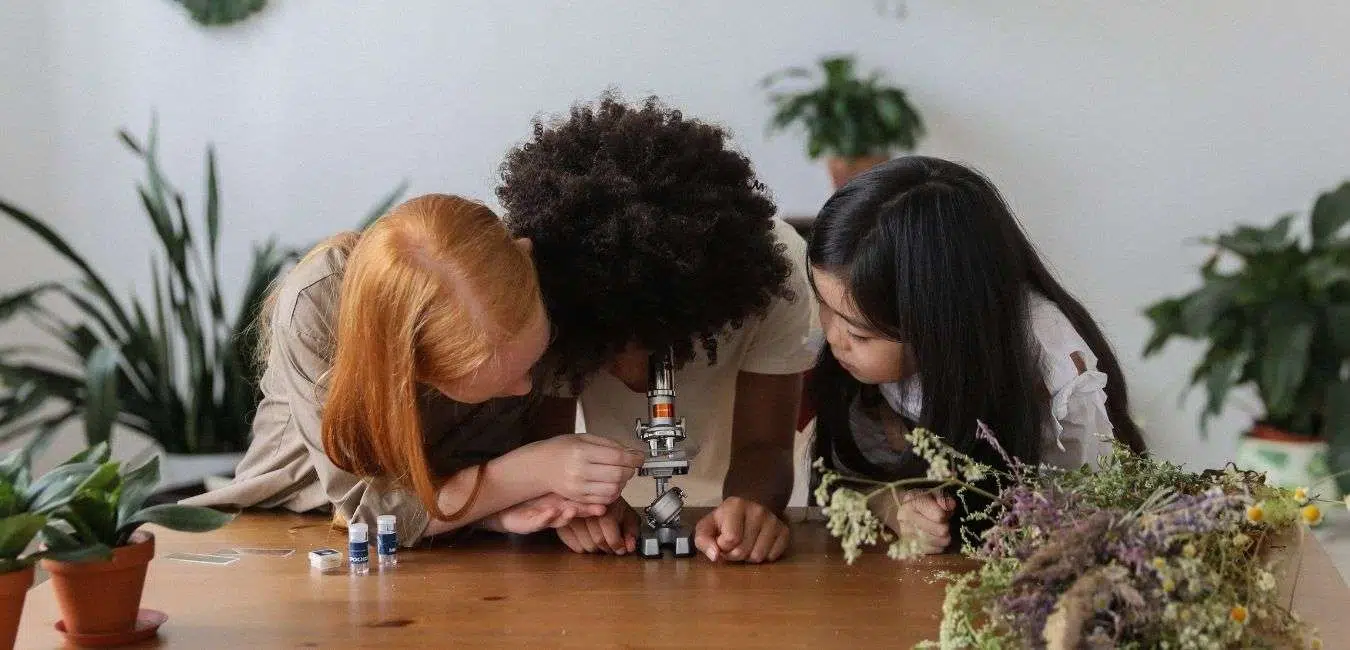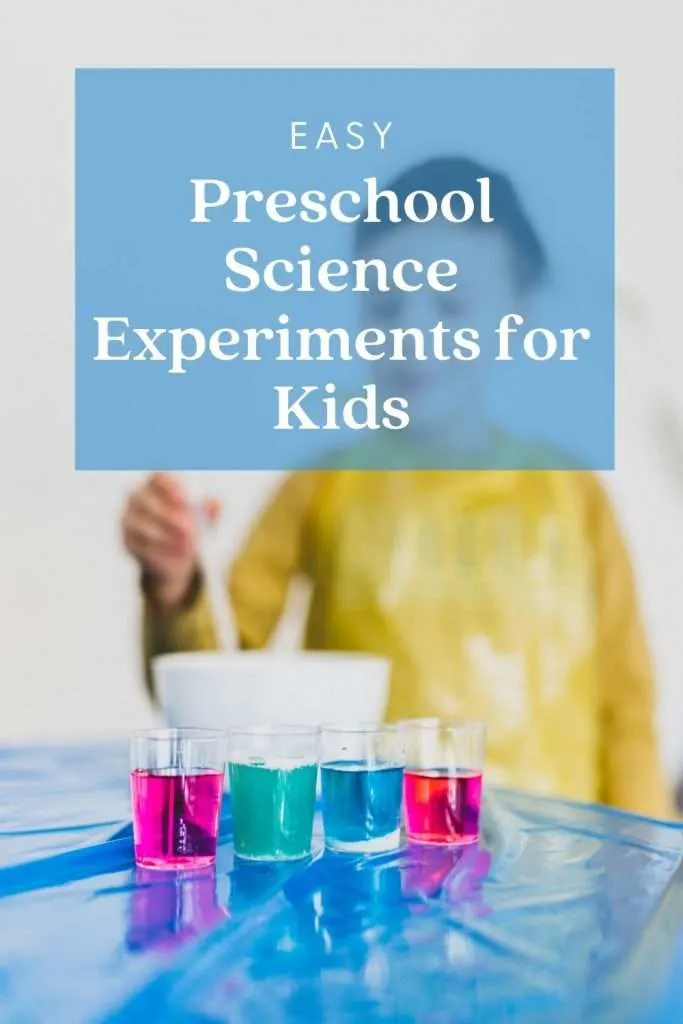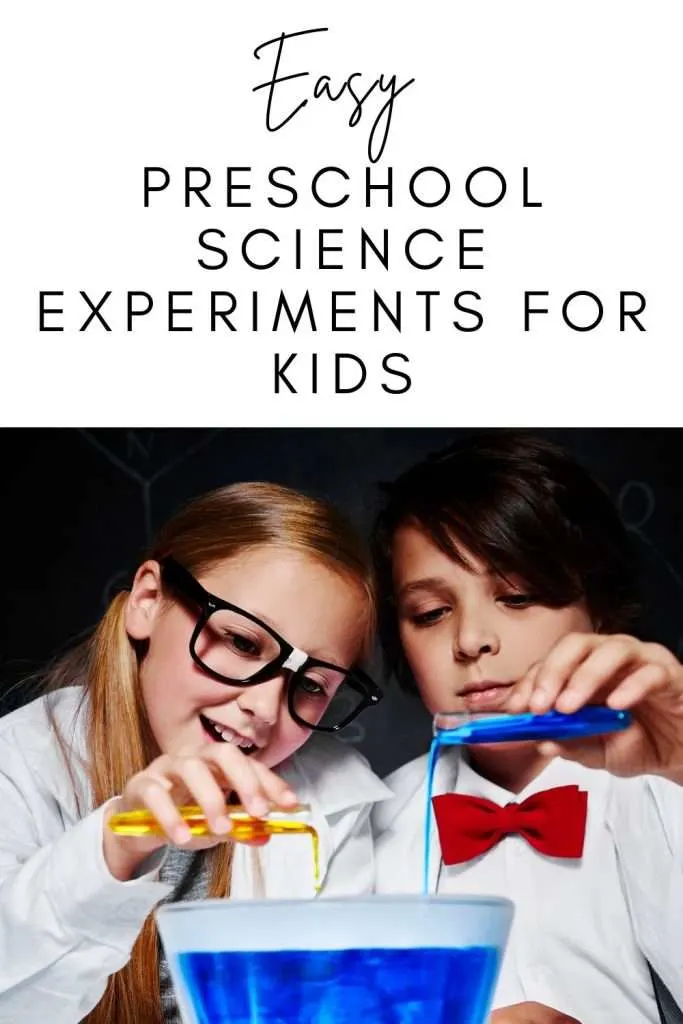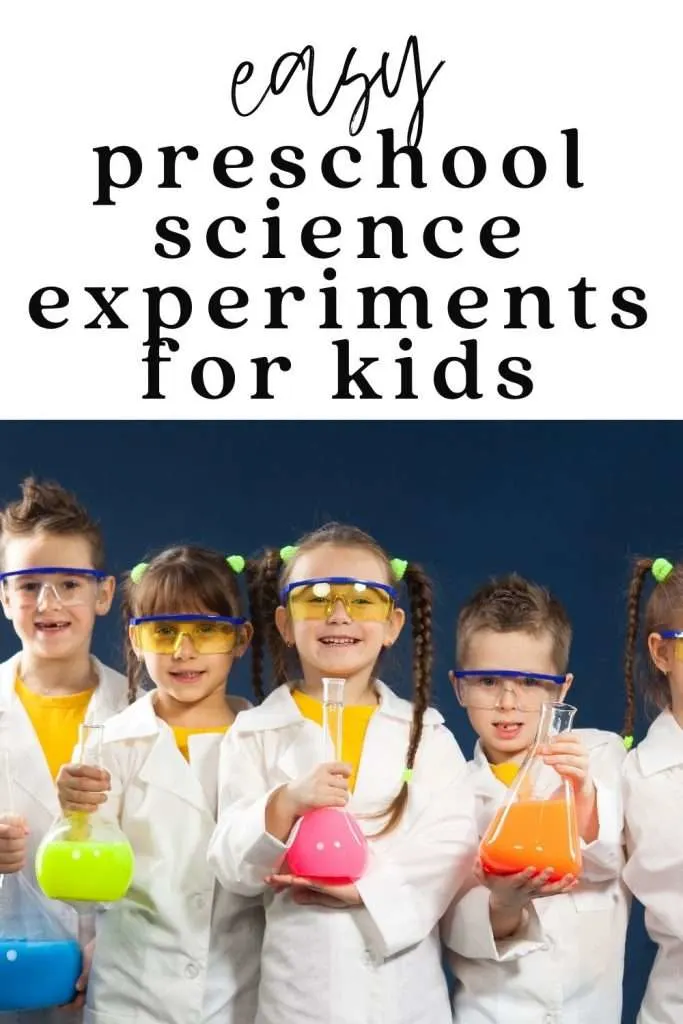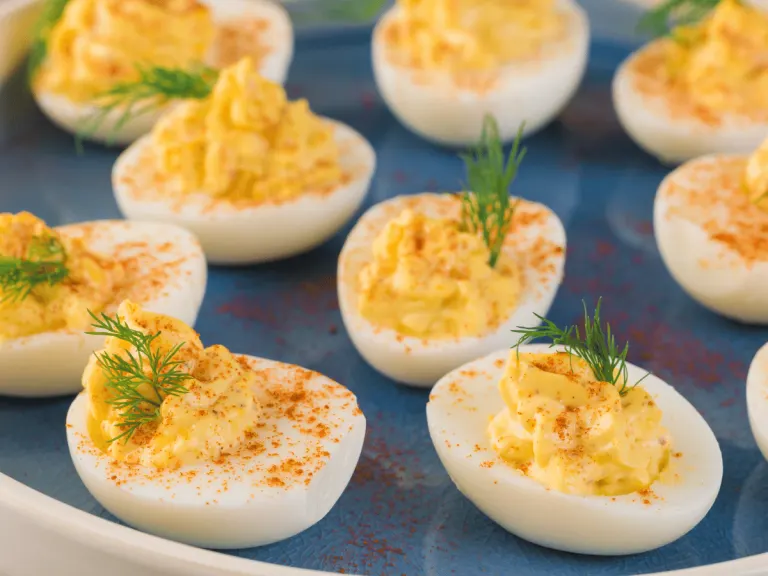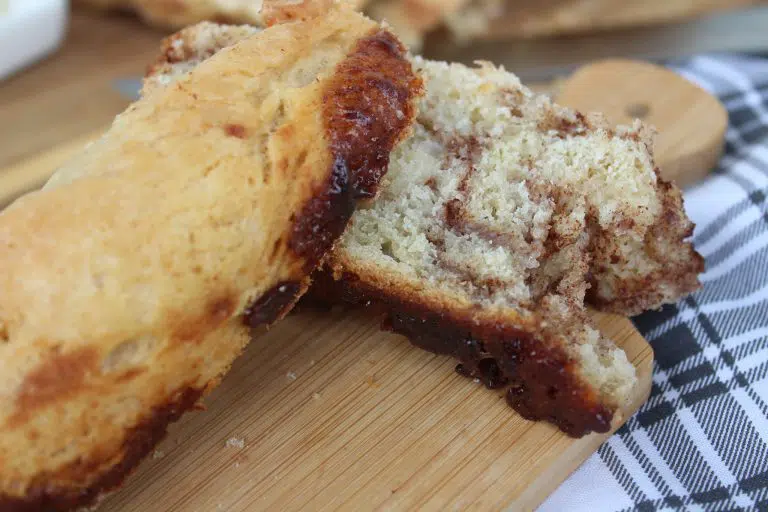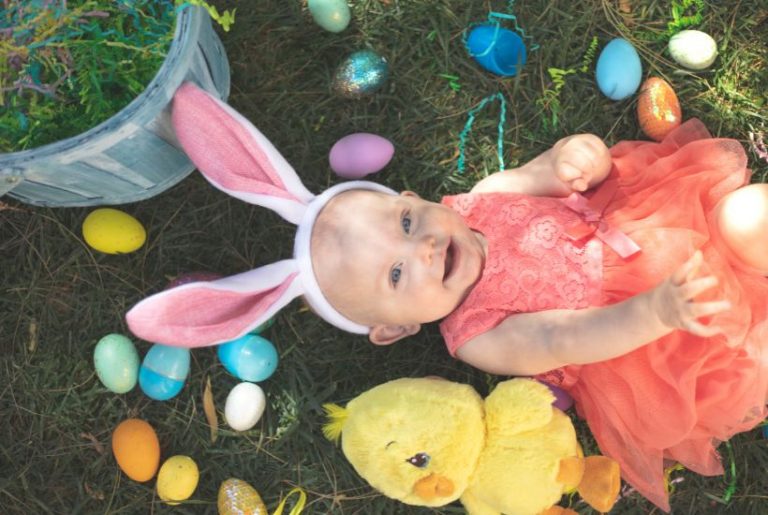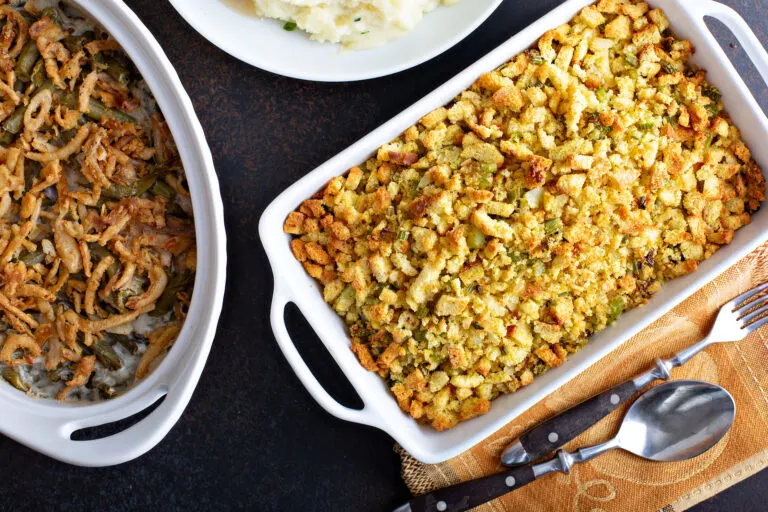Science Experiments for Kids at Home: Four-to-Six-Year-Olds
Last Updated on January 22, 2024 by Allison Lancaster
Preschool science activities are a great way to teach your pre-k and younger kids basic scientific concepts. And preschool science experiments at home are a great way to keep young minds busy now more than ever! In this blog post you’ll find some of our favorite activities that include water, weather, magnets, and even rainbows!
I included a simple science experiment that includes water. Easy to do, right? Do you also know that you can do experiments with baking soda?
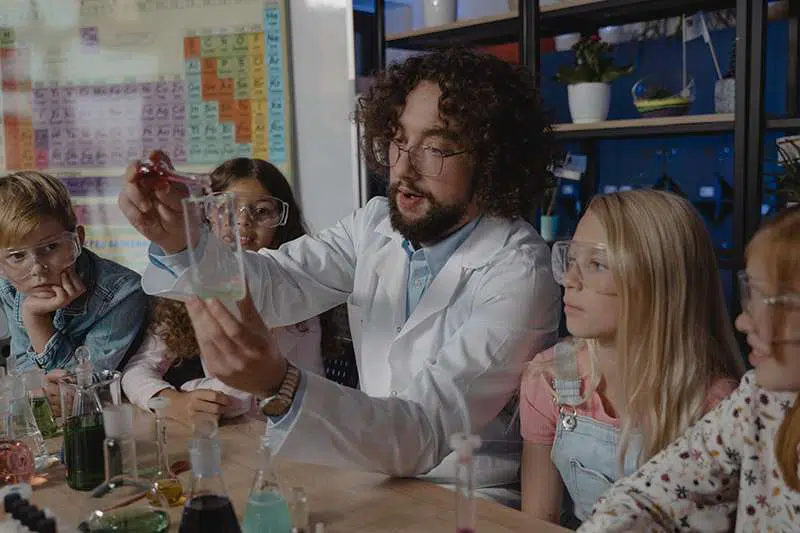
Teaching Kids at Home
With the pandemic affecting our school, kids, and teachers, working parents are taking on the responsibility of a brand-new role as a homeschool teacher. Parents are learning to educate their children at home now more than ever, with some even deciding to keep their kids home for an extended amount of time.
For those parents who are lucky enough to have the flexibility to work from home, being available for the kids relieved some of the anxieties about not having a school to send the kids to or working in the office during a pandemic. It also brought with it a whole new set of challenges that include trying to balance work and schooling the kids.
Homeschooling During The Pandemic
There’s no doubt that homeschooling is tough for everyone involved — parents are trying to juggle their work with their children’s lessons, and kids are quickly losing concentration. It’s even more difficult when there are several different ages within one household.
Science Experiments at Home
Encouraging your kids do simple experiments at home to keep their creativity and curiosity flowing is a fun and great way to incorporate into your kids’ school activities.
Planning some easy to do activities takes a little weight off you and at the same time keeps them occupied, entertained, and very interested in what’s in front of them.
Whether your kids are back in school full or part-time or homeschooling, now is the perfect time to introduce fun back into the at-home classroom with some classic science experiments that you can do from the comfort of your kitchen.
Here are three easy preschool science experiments for kids to do at home! Try these with your kids aged 4-6 from your very own science laboratory.
Science Experiments for Kids at Home
Melting Crayons Rainbow
This colorful rainbow Science experiment for kids will bring a little bit of artistic flair to the science lab. All you need is a canvas, a hot glue gun, a collection of colored crayons, and a hairdryer.
Begin by gluing the crayons to the canvas in rainbow color order along the top of the canvas with the points pointing downward.
Once all the crayons are glued on and dry, lean the canvas up against support like a wall. Make sure to put wax paper or something under the canvas to protect your surface.
Begin heating the crayons with a blow dryer on high heat carefully. Eventually, the wax will start to melt and drip down into a beautiful piece of rainbow art.
Not only is this a super fun art project, but you can explain the physical changes the crayons go through and the phases of matter to your kids. Learning how a solid changes into a liquid once it reaches a certain temperature is a fascinating concept the kids will love seeing firsthand.
The kids love this cool science experiment and the end result makes a really cool piece of art.
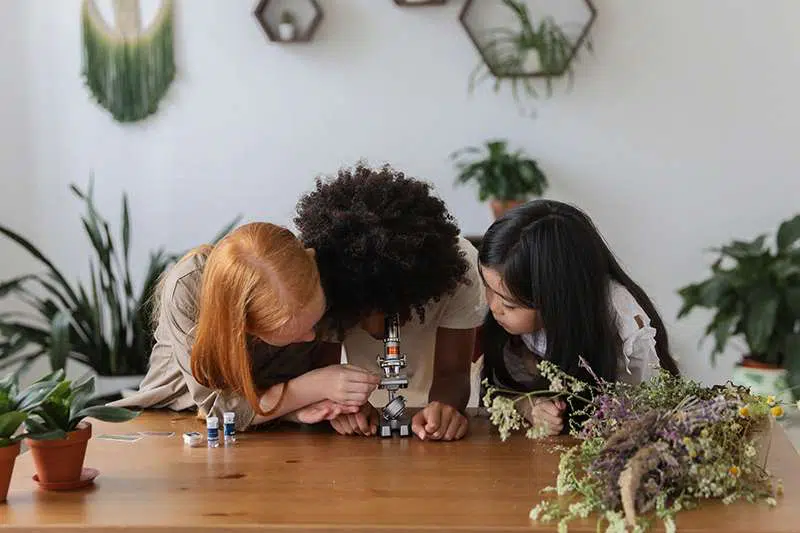
Magnetic Or Not?
Do you remember the unexpected excitement when you were younger of finding your earring or paperclips sticking to something you didn’t realize was magnetic?
Science experiments with magnets for kids can turn a cheap and easy science experiment into an afternoon of discovery. All you need is a single magnet and some imagination.
Simply create a list or map with a route through the house and yard for the kids to follow. List checkpoints along the way for them to stop and test if something is magnetic or not.
This is a great opportunity to teach younger kids how magnetic poles work and also investigate which materials or objects have magnetic fields or repel other magnets.
Making It Rain
With just a few common household items, you and your kids can create a weather science experiment for kids. This project is making a cloud inside a glass of water or in an empty water bottle.
First, fill a clear cup with water, add one layer of shaving cream, and a few drops of food coloring. When the “cloud” gets too heavy, the droplets fall through like rain.
Make it a game if you’re homeschooling more than one child. Just give them each their own choice of food coloring and challenge them to see who will be the first to get their clouds to rain.
This science activity is a great way to teach kids the about rainfall, the process of how clouds evaporate, and how that creates rain. Make sure and explain the science behind this – when droplets get too heavy in real clouds, gravity pulls them down to the ground.
Kids are never too young to start experimenting with Science and there are so many experiments you can do at home with everyday household items.
The important thing to remember throughout these activities is to encourage your kids to ask and answer questions and to think about how the ingredients are reacting with each other.
Science at home can be fun for everyone involved. Simple projects like the ones above are easy to set up, but bring great value to your kids!
I hope these preschool science experiments can greatly help you and your little ones plan some fun in the days to come. Let me know if you want to try this kid’s science experiments at home!
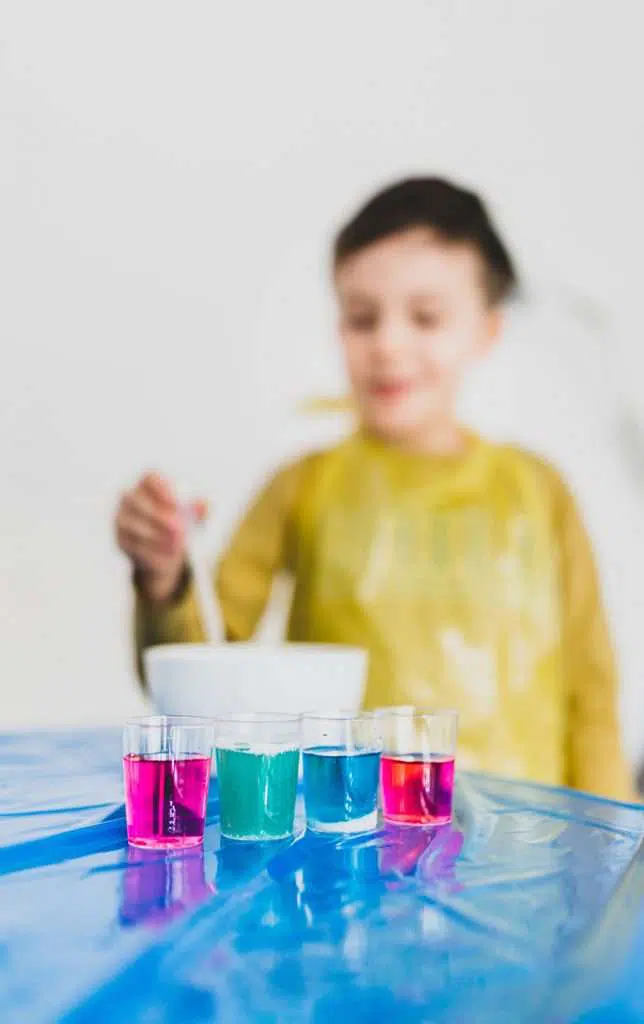
Stephanie Ryan earned her Ph.D. in the Learning Sciences from the University of Illinois at Chicago. She has an M.S. and B.S. in chemistry, from the University of Illinois at Chicago and Saint Mary’s College, respectively. She has taught science in formal and informal settings from K-16, and developed curricula for After School Matters programs in Chicago, Illinois.
For more information, please visit http://www.letslearnaboutscience.com/ or www.ryaneducationconsulting.com/. Follow Stephanie Ryan on Instagram @LetsLearnAboutScience

